The weather where I live has improved enough that I think “the winter that would never end” is finally over. Nicer weather turns my thoughts to outdoor activities and the hope to do some traveling in the coming months. It is definitely an opportunity to spend less time in front of a computer and more time connecting with people and places. Depending on your destination, you may even be able to travel to where an ancestor lived. Genealogy enthusiasts have to realize that members of their living family may not be devoted to seeking out deceased family members. You may have to squeeze in ancestor seeking into a trip that generally has a very different purpose. History in general can of interest even if you can’t identify the specific activities of one of your ancestors at that time and place.
On a recent trip to New Jersey to visit my son and his wife, we decided to visit the 9/11 Memorial at the site of the World Trade Center in Manhattan, New York. I fortunately don’t anyone who died in the 9/11 attacks but as I stood there on the Memorial grounds, my heart went out to those who had lost loved ones. But for a change in work assignments, my son would have been in one of the Twin Towers when the planes hit. He is confident that he would have safely gotten out but I am very grateful that he didn’t have to try. The names of all those who died either in the Twin Towers, the planes that crashed into them, the Pentagon and those who were on Flight 93 which crashed in Somerset county, Pennsylvania are etched into the Memorial. The names are cut all the way through ledges that edge the two fountains that occupy that footprint of the fallen towers. The fountains are constructed so that the bottom of fountain can’t be seen from ground level to create the illusion that they go down as far as the towers went up.
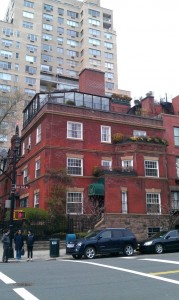 Knowing we were going to be visiting Manhattan, I considered other places we might visit during the same trip. My Irish immigrant grandparents that I wrote about in a previous post: Genealogy Begins at Home—What Do You Have Already came to mind. I have letters that my paternal grandparents exchanged while they were courting back at the turn of the 20th century and living in Manhattan. Fortunately, I have the envelopes along with the letters. On the envelopes are the addresses where either my grandmother or grandfather lived at the time the letters were written. Manhattan, New York has changed dramatically in the past century, so I wondered if we could find any place where one of my grandparents had lived that still resembled the Manhattan that they knew. I used Google maps and plugged in the addresses from the letters. I was so excited to find one address where my grandmother resided that still has a few buildings that date back more than a hundred years. The high rise in the background of this picture has replaced the boarding house where my grandmother and at least one of her sisters rented rooms The red brick building in the foreground dates from the 1880’s and so would have been standing when my grandmother lived there. The red brick building is a collection of row houses that are so unique in the present neighborhood that they have been designated a historical district.
Knowing we were going to be visiting Manhattan, I considered other places we might visit during the same trip. My Irish immigrant grandparents that I wrote about in a previous post: Genealogy Begins at Home—What Do You Have Already came to mind. I have letters that my paternal grandparents exchanged while they were courting back at the turn of the 20th century and living in Manhattan. Fortunately, I have the envelopes along with the letters. On the envelopes are the addresses where either my grandmother or grandfather lived at the time the letters were written. Manhattan, New York has changed dramatically in the past century, so I wondered if we could find any place where one of my grandparents had lived that still resembled the Manhattan that they knew. I used Google maps and plugged in the addresses from the letters. I was so excited to find one address where my grandmother resided that still has a few buildings that date back more than a hundred years. The high rise in the background of this picture has replaced the boarding house where my grandmother and at least one of her sisters rented rooms The red brick building in the foreground dates from the 1880’s and so would have been standing when my grandmother lived there. The red brick building is a collection of row houses that are so unique in the present neighborhood that they have been designated a historical district.
There is also a park in the neighborhood in where my grandmother may have gone for walks. I felt close to my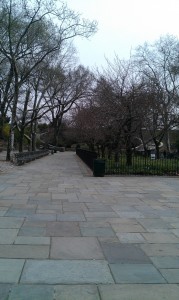 grandmother during the time I spent walking in Carl Schurz Park that afternoon. It is a lovely park maintained by dedicated volunteers.
grandmother during the time I spent walking in Carl Schurz Park that afternoon. It is a lovely park maintained by dedicated volunteers.
To further explore the way places used to be, you might find the website http://www.whatwasthere.com helpful. This site may be helpful to you for exploring the places where your ancestors lived. It appears to be a wiki site, so you may or may not find photographs of the places you are looking for but it’s worth a try.
During a trip last year to Lancaster, Pennsylvania I did some exploring because one of my ancestors, Hugh Snively was born there in 1805. I have no information where precisely Hugh lived, so I just went looking for buildings that looked like they might be two hundred years old. If you have ever been to southeastern Pennsylvania, you know buildings that old aren’t hard to find. I found an old barn that dated back at least two hundred years that the public was allowed to tour. It was an interesting setting because the barn shared a parking lot with the local Target department store! As I walked through the barn, I was impressed that it was as solid as it had been when it was built. This barn interested me not only for its age but because it was a Pennsylvania Dutch style barn and Hugh Snively was Pennsylvania Dutch. I learned that Pennsylvania Dutch barns don’t have haylofts like the barns built in the western United 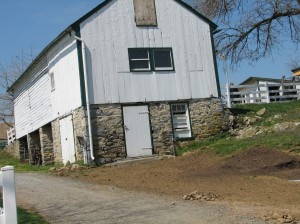 States. Instead they are built into the side of a hill which allows two complete floors rather than a main floor and a hay loft. The barn doors are on opposite sides of the barn with one door at the top of the hill and the other door at the bottom of the hill which allows the upper level to be a solid floor. The white fence on the right side of the picture below borders a ramp that leads to the door to the upper level of the barn.
States. Instead they are built into the side of a hill which allows two complete floors rather than a main floor and a hay loft. The barn doors are on opposite sides of the barn with one door at the top of the hill and the other door at the bottom of the hill which allows the upper level to be a solid floor. The white fence on the right side of the picture below borders a ramp that leads to the door to the upper level of the barn.
Hugh Snively’s mother, Amelia Wilkinson may have been born near Carlisle, Pennsylvania, so the next day I headed to Cumberland County Historical Society in Carlisle, Pennsylvania to see if I could learn anything more about her. I found some information on the man who might be Amelia’s father but more than that I learned the worth of local historical societies. Carlisle isn’t far from Philadelphia and so their records go back to before the founding of the United States. You can sit in the Cumberland County Historical Society reading room and look at documents that date back to the late 1700’s! The documents have been carefully indexed and organized into folders that kept in numbered boxes. You consult the indexes, fill out a form and they bring the requested folder to you. The staff is eager to help and very knowledgeable. The reading room has the typical tables, chairs and microfilm readers. It also has an area at one end
of the room where there are upholstered chairs that creates the feeling of a livingroom. I spent most of the day there, looking at documents, not even stopping for lunch. Toward the end of my time there, an older gentleman came in and sat down on one of the upholstered chairs. When he became aware of what I was looking for, he came over with some additional indexes that I hadn’t used. He explained to me how he had organized the indexes I was now using. That’s right, I had the help of someone who knew the records very well.
If you don’t have the opportunity to visit a local historical society or local genealogical society, you can often still get assistance and information from them. Start with an internet search. While some communities have historical societies, they are usually organized on a county level. Many of these societies now have websites and/or Facebook pages where you can find contact information or submit questions. I have received valuable information by way of email from local county historical societies I have contacted. Be aware, however, these societies are most often staffed by volunteers, so it may take them awhile to respond to your request.
About Christine Bell
Christine Bell has been seeking her ancestor for almost forty years and continues to find joy in each one she finds. She volunteers in a Family Search Family History Center where she helps others find their ancestors. As a convert to The Church of Jesus Christ of Latter-Saints, she is grateful to be a member of the Church. She is a wife, mother of six grown children, grandmother of five going on six, and currently living in the western United States. Christine enjoys spending time with family and creating quilts for family, friends and Humanitarian Services of The Church of Jesus Christ of Latter-day Saints.


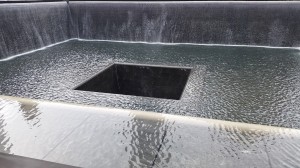
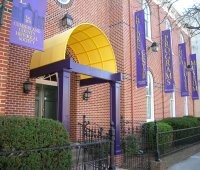
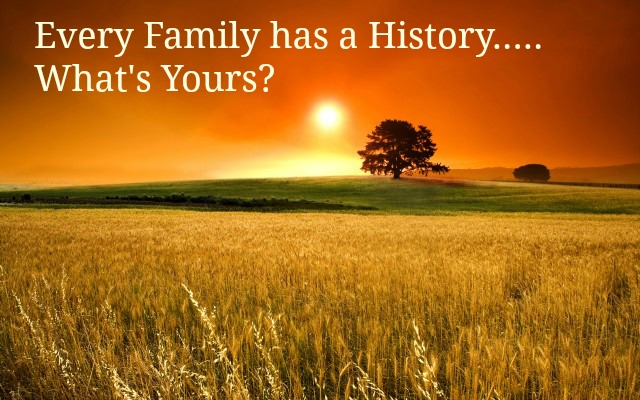


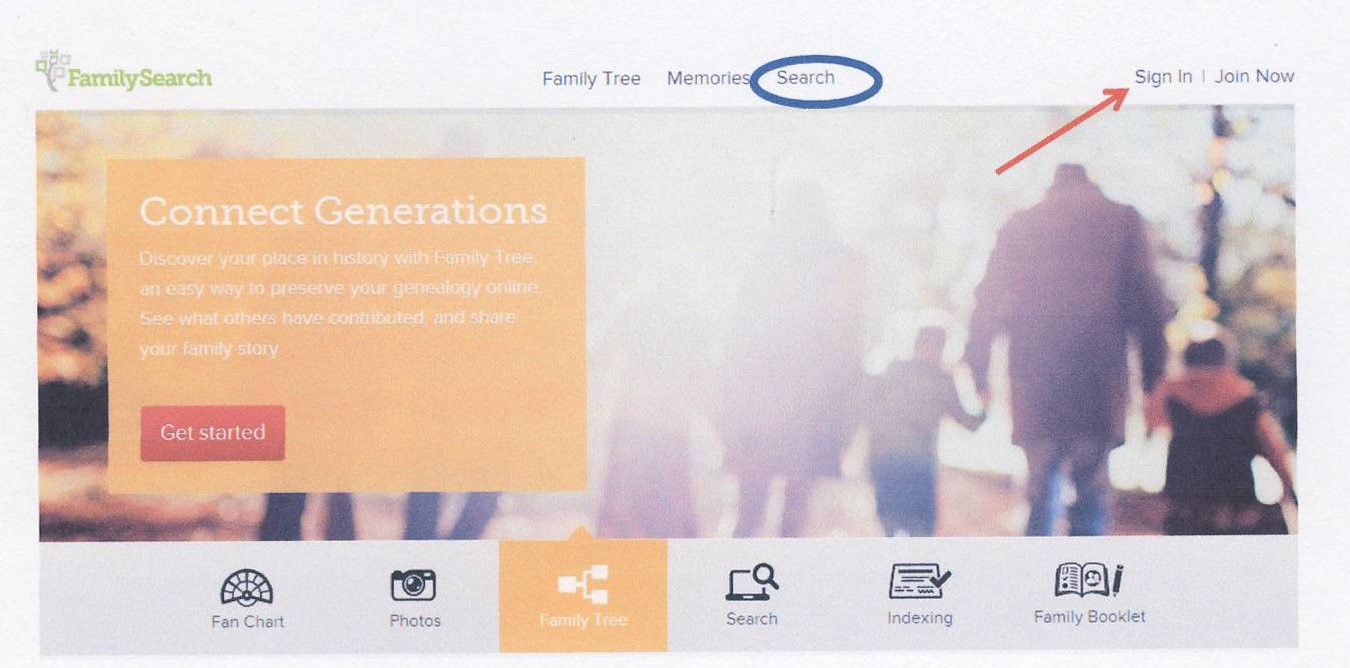



Wow! I had no idea that you could have such adventures in the name of family history! Thanks for sharing your experiences. And thank you for being so dedicated to those who have gone before. I’m sure they would be touched to witness your efforts.